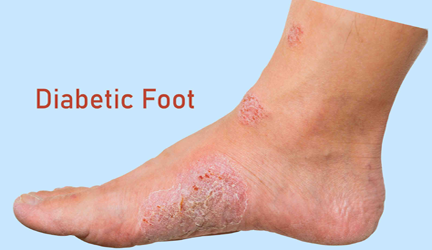- Timing: 8:30 Am to 7 Pm
- Call us: +91 9637257670 , +91 9730881414
- Timing: 7 Pm to 8:30 Am
- Call us: +91 9518519369
Call us: +91 9822433647

Diabetic foot is a complication of diabetes that affects the feet and lower extremities. It arises from damage to the nerves (diabetic neuropathy) and poor circulation (peripheral arterial disease) associated with diabetes. Diabetic foot problems can range from minor issues such as dry skin and calluses to more serious complications such as ulcers, infections, and even tissue necrosis (gangrene). Without proper management, diabetic foot problems can lead to severe consequences, including amputation.